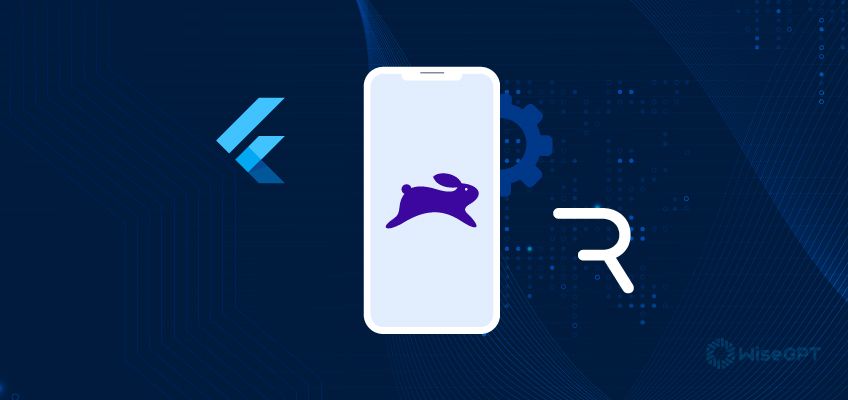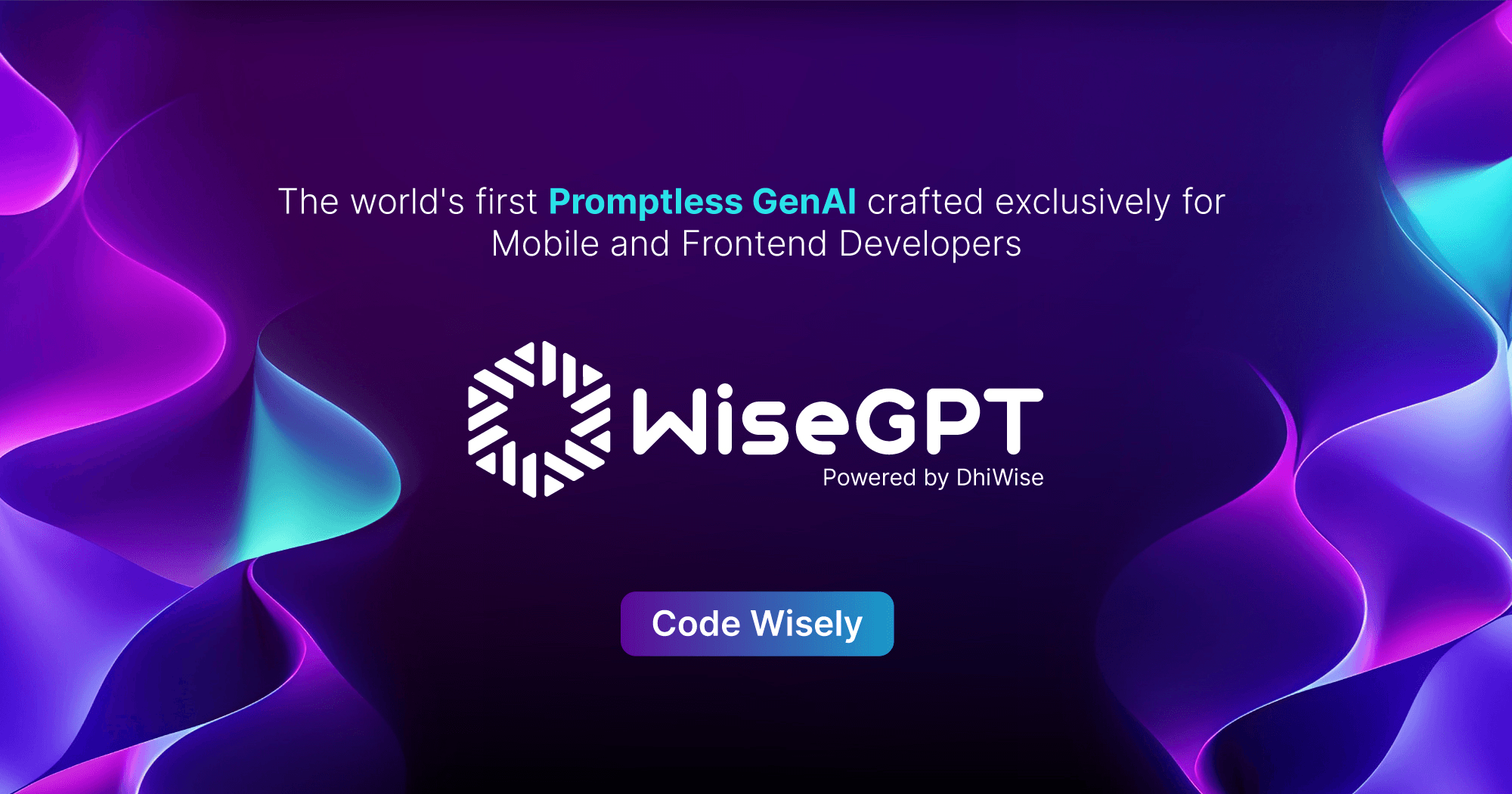
Design Converter
- Technologies
Flutter
React
Shopify
Android
iOS
Flutter
React
Shopify
Android
iOS
- Resource
University
Documentation
Templates
UI Accuracy
Discord
University
Documentation
Templates
UI Accuracy
Discord
- Pricing

Design Converter
Education
Last updated on Nov 3, 2023
•9 mins read
Last updated on Jul 29, 2023
•9 mins read
Welcome to the enchanting world of Flutter animations ! Animations enhance user experiences, making apps more interactive and visually appealing.
This complete guide will analyze the significance of animations in Flutter, the different types Flutter supports, essential concepts, and practical implementation. We'll also create an animation for the Splash screen in a Flutter app. So, fasten your seatbelt and dive into the captivating realm of animations!
Flutter animations bring UI elements to life, creating smooth transitions from one state to another. They offer users visual feedback, clarity, and engagement, making your app stand out.
Flutter's animation system is built upon the Animation framework, which uses AnimationController to control and animate Animation objects. From fading and scaling to rotating and translating widgets, animations in Flutter offer endless possibilities.
Animations play a vital role in creating an exceptional user experience, positively impacting users within your Flutter apps. They are more than just visually appealing; they serve multiple purposes that significantly enhance the overall usability and engagement of your application:
It's essential to understand the core concepts and classes that form the foundation of the animation framework to create captivating animations in Flutter:
The 'Animation' class is at the heart of Flutter Animations. It serves as a bridge between the values to be animated and the animation controller. The animation object interpolates values over a specified range to determine the progression of the animation. For instance, it can interpolate between 0 and 1 to represent an animation's starting and ending states.
The 'AnimationController' class manages the timing and control of the animation. It lets you set the duration of the animation and control its playback using methods like 'forward()', 'reverse()', and 'stop()'. Additionally, you can attach listeners to the controller to respond to animation events such as completion or dismissal.
While linear animations are straightforward, Flutter provides the 'CurvedAnimation' class to introduce more complex and visually appealing animations. This class allows you to define the progression of the animation using non-linear curves. Curved animations are handy for creating smooth accelerations or decelerations, giving your animations a natural and polished feel.
The 'Tween' class interpolates between a range of data for the object being animated. For example, if you want to animate the size of a widget from 100 pixels to 200 pixels, you can use a 'Tween' to interpolate the values in between. Tweens make it easy to animate various properties of widgets, such as opacity, colour, and position.
Flutter goes a step further by offering physics-based animations. This animation simulates real-world physics, allowing you to create natural and realistic animations. Physics-based animations are handy for elements that exhibit dynamic behaviour, such as bouncing, spring-like motion, or gravitational effects.
Mastering these animation concepts and classes empowers you to breathe life into your Flutter app's user interface. Combining creativity with technical expertise allows you to craft visually appealing, interactive, and engaging animations that enhance the overall user experience.
Flutter offers various animation types to cater to diverse use cases and creative possibilities. Let's delve into these animation types in more detail:
Flutter provides built-in support for explicit animations. With explicit animations, you define the starting and ending points of the animation explicitly. You can use animation controllers and the 'AnimatedBuilder' widget to animate properties like size, position, opacity, and more. Explicit animations offer precise control over the animation's behaviour and timing, making them suitable for various UI interactions.
Unlike explicit animations, implicit animations automatically animate widget properties changes without explicitly defining the animation. These animations work effortlessly by wrapping widgets with specific 'Animated' counterparts, such as 'AnimatedContainer', 'AnimatedOpacity', or 'AnimatedPadding'.
When the underlying properties of these widgets change, Flutter smoothly animates the transition. Implicit animations save development time and effort, especially for simple animations with predefined widgets.
Flutter's Hero animations enable seamless and visually pleasing screen transitions. Hero animations are handy when navigating between different routes or pages. By wrapping widgets with the 'Hero' widget and providing a unique tag, you can smoothly animate them between routes, creating a sense of continuity and enhancing the overall user experience.
Staggered animations add a delightful touch to your UI by animating multiple widgets with a time delay between each animation. This creates a cascading effect where widgets animate one after the other, providing an engaging and dynamic user experience. Flutter's animation framework allows you to apply staggered animations easily, adding flair to your app's UI.
Flutter's flexibility allows you to create custom animations tailored to your requirements. You can combine animation concepts like tweens, curves, and physics-based animations to craft unique and captivating animations that align perfectly with your app's branding and user experience goals.
Custom animations offer limitless possibilities for expressing creativity and making your app stand out.
By leveraging these supported animation types, you can elevate your Flutter app's user interface to new heights.
Whether you need simple and efficient animations or want to unleash your creativity with custom animations, Flutter's animation framework empowers you to create memorable and engaging user experiences.
Follow these best practices to ensure smooth and efficient animations:
Let's create a captivating animation for the Splash screen that welcomes users to our Flutter app. The animation will include a Rive animation for the logo, with a smoothly fading effect.

Splash screen with Rive animation.
Create a new Flutter project and add the following dependencies in the pubspec.yaml file:
1dependencies: 2 flutter: 3 sdk: flutter 4 animated_splash_screen: ^1.3.0 5 rive: ^0.11.8
Create a new Dart file called splash_screen.dart and implement the Splash Screen widget using the animated_splash_screen package:
1import 'package:flutter/material.dart'; 2import 'package:animated_splash_screen/animated_splash_screen.dart'; 3import 'package:rive/rive.dart'; 4 5class SplashScreen extends StatelessWidget { 6 @override 7 Widget build(BuildContext context) { 8 return AnimatedSplashScreen( 9 duration: 3000, 10 splash: RiveAnimation.asset( 11 'assets/rive_animation/logo.riv', 12 fit: BoxFit.contain, 13 ), 14 nextScreen: HomeScreen(), 15 // Replace with **your app's Home Screen** 16 splashTransition: SplashTransition.fadeTransition, 17 pageTransitionType: PageTransitionType.scale, 18 ); 19 } 20}
For this example, let's use a Rive animation for the logo. Download a Rive animation (e.g., 'logo.riv') and place it in the assets/rive_animation/ directory.
Run the app, and you will witness the magic of animations as the Splash screen welcomes users with a smoothly fading Rive animation logo.
WiseGPT is a game-changing plugin that brings a revolutionary code generation experience to your Flutter projects. Specifically designed for Flutter, this powerful IDE plugin allows you to effortlessly create complex animation code without any output size restrictions, significantly enhancing your productivity.

One of the standout features of WiseGPT is its ability to mirror your coding style seamlessly. No more worrying about disjointed code snippets or inconsistent formatting. The code generated by WiseGPT effortlessly blends with your existing codebase, maintaining consistency and reducing the need for tedious adjustments.
This means more time spent building exceptional animations and less time grappling with code structure.
Gone are the days of dealing with prompts or spending precious minutes tweaking the generated code. WiseGPT intuitively understands your requirements without any prompts, ensuring a smooth and efficient code generation process. It effortlessly grasps the essence of your animation needs and generates the corresponding code, saving you valuable time and effort.
WiseGPT takes automation to a new level by automatically creating files and functions for your animations. No more manual code management or setting up boilerplate code. With WiseGPT, you can focus on defining the core aspects of your animations while the tool handles the rest.
This automation streamlines your development workflow and allows you to build more robust and scalable Flutter applications in a fraction of the time.
Incorporating WiseGPT into your Flutter development toolkit empowers you to take your animation projects to new heights. This plugin streamlines the code generation process, saving you time and effort while maintaining the quality of your animations. Say goodbye to mundane coding tasks and embrace the seamless integration and automation that WiseGPT brings to your Flutter projects.
By combining the power of Flutter Animations with WiseGPT, you unlock a whole new realm of possibilities for your app development. Embrace the potential of this innovative tool and witness a significant transformation in your Flutter projects.
Whether you're a skilled developer or just starting with Flutter, WiseGPT is a must-try addition to your toolkit. Streamline your animation workflow and unleash your creativity with WiseGPT for Flutter!
Tired of manually designing screens, coding on weekends, and technical debt? Let DhiWise handle it for you!
You can build an e-commerce store, healthcare app, portfolio, blogging website, social media or admin panel right away. Use our library of 40+ pre-built free templates to create your first application using DhiWise.